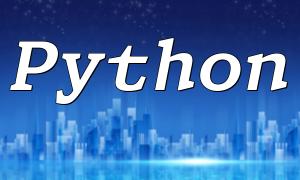Overview:
In web development and data processing, it's often necessary to parse HTML or XML documents to extract specific elements or information. PHP provides powerful functions and classes that make this process efficient and simple. This article will introduce how to parse HTML/XML documents in PHP and demonstrate how to extract specific elements using examples.
1. Parsing HTML/XML Documents
1.1 Using the SimpleXML Extension:
The SimpleXML extension provides a simple and intuitive way to parse XML documents. Below is an example showing how to use SimpleXML to parse an XML document and extract information:
$xmlString = '<root><name>John Doe</name><age>25</age></root>';
$xml = simplexml_load_string($xmlString);
$name = $xml->name;
$age = $xml->age;
echo "Name: $name, Age: $age";
1.2 Using the DOM Extension:
The DOM extension offers a more low-level and flexible way to parse and handle HTML/XML documents. Below is an example demonstrating how to use the DOM extension to parse an HTML document and extract specific elements:
$htmlString = '<html><body><h1>Hello World</h1><p>Welcome to my website</p><p><span>Learn Now</span><a href="https://example.com">PHP Free Study Notes</a></p></body></html>';
$dom = new DOMDocument();
$dom->loadHTML($htmlString);
$headings = $dom->getElementsByTagName('h1');
foreach ($headings as $heading) {
echo $heading->nodeValue;
}
2. Handling HTML/XML Elements
2.1 Extracting Element Attributes:
When parsing HTML/XML, it's often necessary to extract specific attributes of elements. Below is an example showing how to extract element attributes using the SimpleXML extension:
$xmlString = '<root><book title="PHP in Action" price="29.99" /></root>';
$xml = simplexml_load_string($xmlString);
$title = $xml->book['title'];
$price = $xml->book['price'];
echo "Title: $title, Price: $price";
2.2 Iterating Over Elements and Child Elements:
Sometimes we need to iterate over all child elements of an element or over all elements in a document. Below is an example showing how to iterate over all elements in an HTML document using the DOM extension:
$htmlString = '<html><body><h1>Heading 1</h1><p>Paragraph 1</p><h2>Heading 2</h2><p>Paragraph 2</p></body></html>';
$dom = new DOMDocument();
$dom->loadHTML($htmlString);
$elements = $dom->getElementsByTagName('*');
foreach ($elements as $element) {
echo $element->nodeName . ': ' . $element->nodeValue . '<br>';
}
2.3 Extracting Elements Using XPath:
XPath is a language used to locate specific nodes in an HTML/XML document. PHP's DOMXPath class provides support for XPath. Below is an example showing how to use an XPath expression to extract specific elements from an HTML document:
$htmlString = '<html><body><div><h1>Heading 1</h1><p>Paragraph 1</p></div><div><h2>Heading 2</h2><p>Paragraph 2</p></div></body></html>';
$dom = new DOMDocument();
$dom->loadHTML($htmlString);
$xpath = new DOMXPath($dom);
$paragraphs = $xpath->query('//p');
foreach ($paragraphs as $paragraph) {
echo $paragraph->nodeValue . '<br>';
}
Conclusion:
Parsing and handling HTML/XML documents in PHP is a very common and useful task. With the help of SimpleXML and DOM extensions, the process becomes both simple and efficient. By parsing and processing HTML/XML documents, you can extract specific elements and information, which provides strong support for web development and data processing. The examples above should help you better understand and apply these PHP techniques for parsing and handling HTML/XML.









